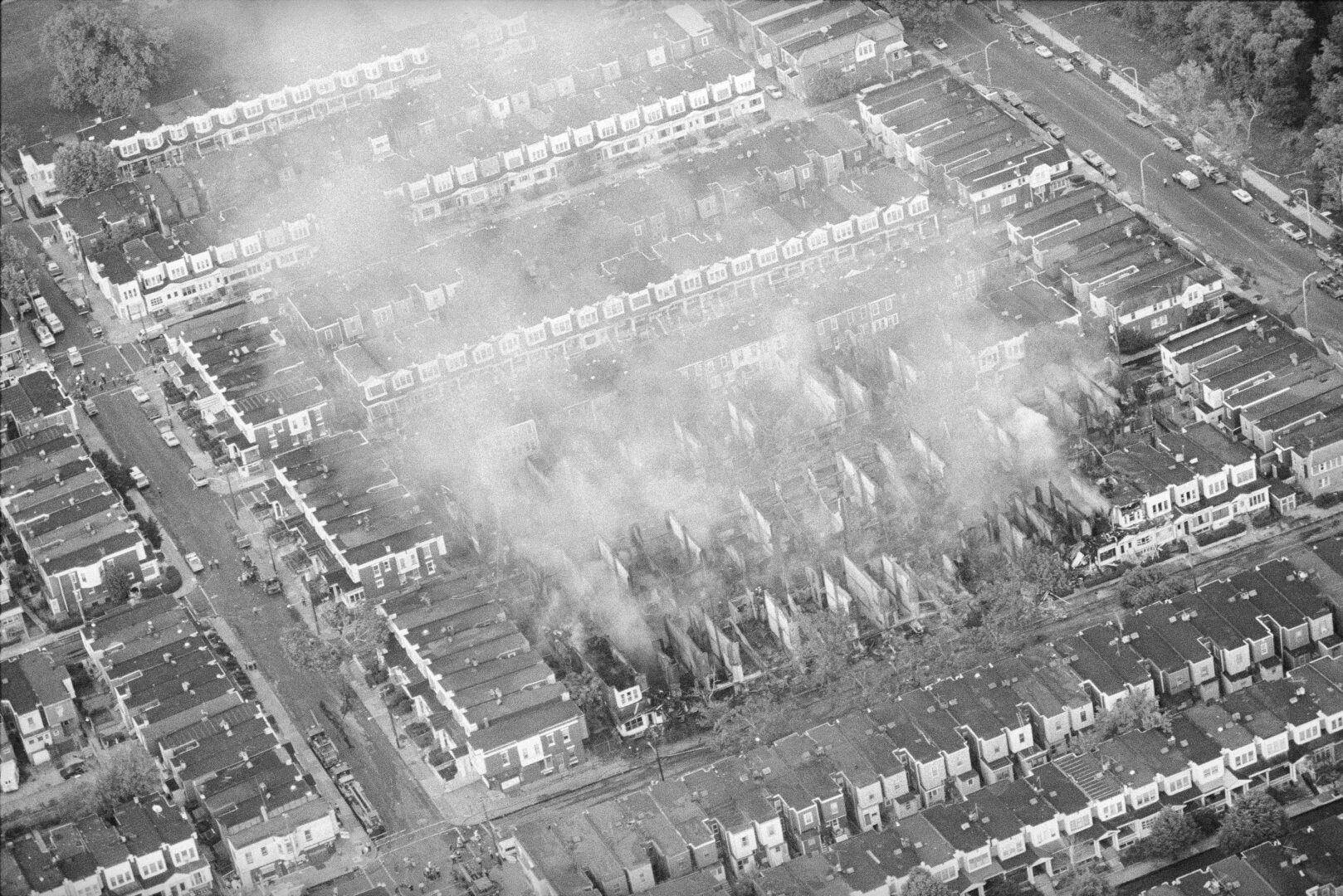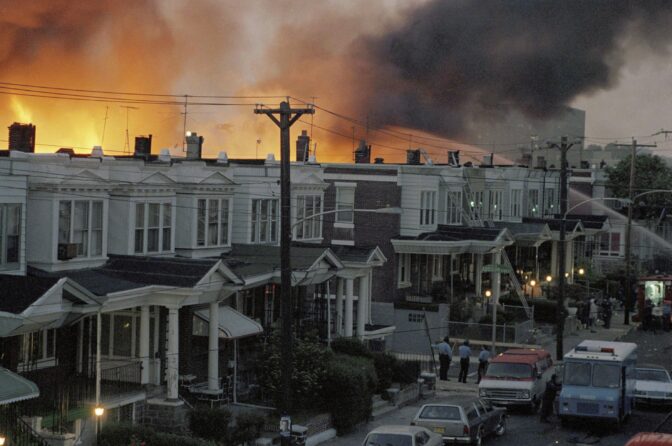
Smoke rises from the ashes of a West Philadelphia neighborhood, May 4, 1985, the morning after a siege between Philadelphia police and members of the radical group MOVE left 11 people dead and 61 homes destroyed.
Peter Morgan / AP Photo

Smoke rises from the ashes of a West Philadelphia neighborhood, May 4, 1985, the morning after a siege between Philadelphia police and members of the radical group MOVE left 11 people dead and 61 homes destroyed.
Peter Morgan / AP Photo

Peter Morgan / AP Photo
Smoke rises from the ashes of a West Philadelphia neighborhood, May 4, 1985, the morning after a siege between Philadelphia police and members of the radical group MOVE left 11 people dead and 61 homes destroyed.
The brother of two girls killed in a 1985 police bombing on the headquarters of a Black Liberation group has filed a lawsuit against the city of Philadelphia and the University of Pennsylvania, saying his sisters’ remains were mishandled and hidden away for decades causing the family extreme distress.
In 2021, it came to light that the university had retained bones from at least one bombing victim after helping with the forensic identification in the wake of the bombing. Those bones are believed to be 14-year-old Katricia Dotson and had likely been used in at least one lesson. A short time later, the city notified family members that there was a box of remains at the medical examiner’s office that had been kept after the autopsies were completed.
Lionell Dotson filed the civil lawsuit in Philadelphia’s Court of Common Pleas late last week. The lawsuit says both the university and the city engaged in tortious interference with a dead body and inflicted emotional distress on him and his mother, Consuewella Africa, who died in June 2021. Katricia and Zanetta Dotson, 12, were among five children and six adults killed in the 1985 police bombing of the headquarters of MOVE, a Black Liberation group. More than 60 homes in the neighborhood burned to the ground as emergency personnel were told to stand down.
A spokesman for the city and a spokesperson for the university said Monday they could not comment on pending litigation.

AP Photo, File
In May of 1985, scores of row houses burn in a fire in the West Philadelphia neighborhood. Police dropped a bomb on the militant group MOVE’s home, May 13, 1985, in an attempt to arrest members, leading to the burning of scores of homes in the neighborhood.
“Katricia and Zanetta Dotson were two children who died in the most violent way imaginable,” Daniel P. Hartstein, a civil rights attorney representing Dotson wrote in an emailed statement. “The Philadelphia Medical Examiner’s Office and the Penn Museum denied their humanity and dignity in death. The Dotson family is irreparably scarred by this shocking lack of basic human decency.”
Amid revelations of the bones being kept at the Penn Museum in 2021, the city also revealed that the Health Commissioner in 2017 had ordered the destruction of a box of remains kept after the autopsies of the bombing victims. Family had previously believed that all of the remains had been returned to them and buried in a joint funeral for the two sisters.
Thomas Farley resigned as Health Commissioner and issued an apology, but a day later the city issued another statement that the remains had not been destroyed and had been located in the medical examiner’s office.
In August, Dotson travelled from North Carolina to receive the remains of his sisters from the medical examiner’s office. But the lawsuit argues that some remains may have been lost or may still be at the university, saying Dotson’s sisters were inappropriately used as props and kept as trophies.
MOVE members, led by founder John Africa, practiced a lifestyle that shunned modern conveniences, preached equal rights for animals and rejected government authority. The group clashed with police and many of their practices drew complaints from neighbors.
Police seeking to oust members from their headquarters used a helicopter to drop a bomb on the house on May 13, 1985. A 1986 commission report called the decision to bomb an occupied row house “unconscionable.” MOVE survivors were awarded a $1.5 million judgment in a 1996 lawsuit.
The days of journalism’s one-way street of simply producing stories for the public have long been over. Now, it’s time to find better ways to interact with you and ensure we meet your high standards of what a credible media organization should be.